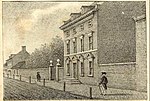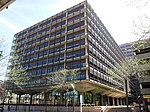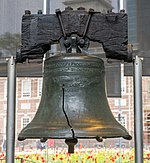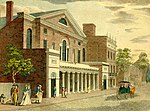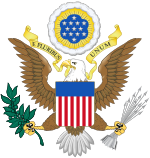James A. Byrne United States Courthouse

The James A. Byrne United States Courthouse is a Federal courthouse in the Center City region of Philadelphia. The court houses the United States Court of Appeals for the Third Circuit and the United States District Court for the Eastern District of Pennsylvania. It is located at 601 Market Street between N. 6th and N. 7th Streets, next to Independence Mall. The building is named after James A. Byrne, a former Democrat in the U.S. House of Representatives. Construction on the building, which overlooks Independence National Park, began in 1970. The building and the adjacent federal building were both designed by Bellante & Clauss, Carroll, Grisdale & Van Alen and Stewart, Noble, Class & Partners, all of Philadelphia. It opened in late 1975, to coincide with the celebration of the Bicentennial of the Declaration of Independence. It houses a Louise Nevelson sculpture titled Bicentennial Dawn. Under the leadership of former Chief Third Circuit Judge Edward R. Becker, the main entrance and ground floor lobby were redesigned in 2004 to be more inviting and educational to the general public. After his death in 2006, the lobby, which features quotations on the importance of the right to jury trial, was dedicated to and named for Judge Becker.Along with the adjacent William J. Green, Jr. Federal Building, the Courthouse is part of the largest Federal complex in Philadelphia, with 1.7 million gross square feet. It shares mechanical systems and an underground garage with the Green Building.
Excerpt from the Wikipedia article James A. Byrne United States Courthouse (License: CC BY-SA 3.0, Authors, Images).James A. Byrne United States Courthouse
North Independence Mall West, Philadelphia Center City
Geographical coordinates (GPS) Address Nearby Places Show on map
Geographical coordinates (GPS)
| Latitude | Longitude |
|---|---|
| N 39.950765 ° | E -75.15039 ° |
Address
Rohm and Haas Building
North Independence Mall West 100
19106 Philadelphia, Center City
Pennsylvania, United States
Open on Google Maps
